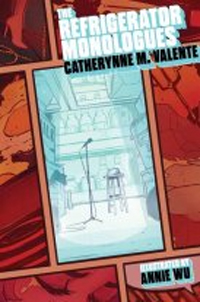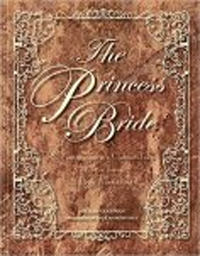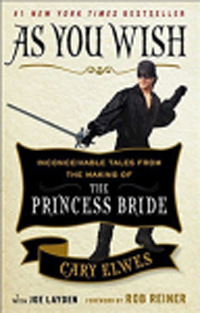I’ll Be Gone in the Dark by Michelle McNamara
I don’t usually read true-crime books. The genre has never really appealed to me. The ways in which human beings can be awful leaves me lying awake at night as it is. But, as the internet makes the world ever more connected, it seems like these sorts of stories pop up on every form of social media I use. So, of course I heard about Michelle McNamara’s book. With rave reviews from the likes of Stephen King and an introduction written by Gillian Flynn, I decided to brave I’LL BE GONE IN THE DARK.
There are two stories in I’ll Be Gone in the Dark. One is the story of the Golden State Killer. The second, the story of Michelle McNamara. When she was a teenager, a girl in her neighborhood was killed. The murder went unsolved and McNamara was troubled by the idea that the killer was somewhere out there, unpunished. McNamara became a crime blogger, using TrueCrimeDiary.com to explore cold cases alongside other online amateur sleuths. When she came upon the story of the Golden State Killer, an obsession was born.
From 1974 through 1986, the Golden State Killer (GSK; the term was coined by McNamara) terrorized neighborhoods in Northern California, primarily Sacramento county. For years, law enforcement believed that there were three distinct criminals operating in the area: the Visalia Ransacker, the East Area Rapist, and the Original Night Stalker (not to be confused with Night Stalker Richard Ramirez). The truth, however, was that these were all the crimes of one man: the Golden State Killer.
The connection between these crimes would not be discovered until the invention of DNA testing. When samples from the seemingly unconnected offenses were entered into CODIS, the federal DNA database, the full range of GSK’s crimes became apparent. A particular genetic peculiarity made the DNA samples easy to connect. His offenses had, over the years, escalated from mere break-ins to rape and murder.
The Golden State Killer was meticulous in his planning. He would survey not just individuals, but entire neighborhoods for weeks at a time before striking. Often, he would call potential victims in what were assumed to be prank calls. He operated on terror, often taking hours to complete his intrusions. Even years later, he would call his living victims and whisper threats to them. Police had very few clues to go on.
I don’t want to write too much about the individual events described in I’ll Be Gone in the Dark. In many ways, the actions of the Golden State Killer aren’t the focus of the story that McNamara tells. McNamara’s writing breathes life into the places and people associated with GSK. She spends more time discussing the lives of the victims than the actual crimes, which makes them feel less like characters in a gruesome play and more like the people they were.
While McNamara doesn’t go into extreme detail about the offenses committed by GSK, the overall tone of the book is haunting. In fact, one night after I had gone to bed, one of my cats shoved open the bedroom door to join me. A fairly common occurrence, to be sure, but this time I had to choke back a scream. For an instant, I was sure that the Golden State Killer had burst into the room. I laid awake for a long while.
McNamara shares the histories of the places and people involved, building the world of Northern California so that it almost becomes a character on its own. As with many true-crime books, there are pictures included. But these are not grisly procedural shots. Instead, McNamara included pictures of some of the GSK victims and law enforcement professionals associated with the case. These portraits help preserve the dignity of those affected by these horrific crimes.
On April 24, the Sacramento County Sheriff’s Department arrested Joseph James DeAngelo for the GSK CRIMEs. You can find plenty of news stories about him with a quick Internet search. The most shocking aspect of DeAngelo’s arrest? He had worked as a police officer. More details will surely be forthcoming, but it seems likely that GSK has in fact been caught.
Sadly, McNamara passed away before her book was published, but her husband, actor Patton Oswalt, helped see her dream come true. I’ll Be Gone in the Dark is masterfully written, tying together the author’s life and the series of horrific crimes committed by the Golden State Killer. Gripping but not gruesome, McNamara’s book is one I would recommend for true-crime lightweights like myself.
Book review by: Leslie Hayes

 Future Home of the Living God: a novel by Louise Erdrich — Set in the not too distant future, or maybe just an alternative present, Erdich explores what might happen in a world where humans seem to be devolving. Cedar Hawk Songmaker is a Native American who has been adopted by a white family. And she has a secret: she’s pregnant. In an increasingly dystopian world, can she ensure the safety of herself, her child, and her families? I spent a lot of time frightened for Cedar and she journeys between worlds, both literal and spiritual. Erdich’s story is firmly within the realm of Atwood’s The Handmaid’s Tale.
Future Home of the Living God: a novel by Louise Erdrich — Set in the not too distant future, or maybe just an alternative present, Erdich explores what might happen in a world where humans seem to be devolving. Cedar Hawk Songmaker is a Native American who has been adopted by a white family. And she has a secret: she’s pregnant. In an increasingly dystopian world, can she ensure the safety of herself, her child, and her families? I spent a lot of time frightened for Cedar and she journeys between worlds, both literal and spiritual. Erdich’s story is firmly within the realm of Atwood’s The Handmaid’s Tale. The Refrigerator Monologues by Catherynne Valente — In the world of comic books, there is a term for a select group of characters: Women in Refrigerators. This refers to the disproportionate amount of female characters that are killed in the name of furthering storylines. Valente tells the stories of a series of women characters — no one directly from comics, but recognizable if you’re familiar with many of the big name series — who have been written out of the comics world and spend their time in the afterworld. The characters cover the gamut of emotions associated with such deaths, but also speak to the strength of female friendships. A quick read for anyone who wants a different perspective on the world of comics.
The Refrigerator Monologues by Catherynne Valente — In the world of comic books, there is a term for a select group of characters: Women in Refrigerators. This refers to the disproportionate amount of female characters that are killed in the name of furthering storylines. Valente tells the stories of a series of women characters — no one directly from comics, but recognizable if you’re familiar with many of the big name series — who have been written out of the comics world and spend their time in the afterworld. The characters cover the gamut of emotions associated with such deaths, but also speak to the strength of female friendships. A quick read for anyone who wants a different perspective on the world of comics. Total Cat Mojo by Jackson Galaxy — Let’s be honest: I’m a crazy cat lady. I grew up a dog person, but years ago, my husband introduced me to cats and it’s been all downhill from there. Like any responsible pet owner, I want to make sure my cats are living their best lives. And that means Jackson Galaxy. He’s pretty much the go-to guy for cat people. And TOTAL CAT MOJO is a wonderful resource for all stages of a cat’s life. Plus, he gives great advice for troubleshooting common cat problems like litter box struggles, dealing with stressed kitties, and introducing new family members — from feline to human.
Total Cat Mojo by Jackson Galaxy — Let’s be honest: I’m a crazy cat lady. I grew up a dog person, but years ago, my husband introduced me to cats and it’s been all downhill from there. Like any responsible pet owner, I want to make sure my cats are living their best lives. And that means Jackson Galaxy. He’s pretty much the go-to guy for cat people. And TOTAL CAT MOJO is a wonderful resource for all stages of a cat’s life. Plus, he gives great advice for troubleshooting common cat problems like litter box struggles, dealing with stressed kitties, and introducing new family members — from feline to human. Today’s featured titles come courtesy of the library’s High School Book Club. At their last meeting, these awesome folks opted to read books which had been made into movies. Their inspiration led me to a book which spawned a modern classic film then right to a book about the making of the film itself.
Today’s featured titles come courtesy of the library’s High School Book Club. At their last meeting, these awesome folks opted to read books which had been made into movies. Their inspiration led me to a book which spawned a modern classic film then right to a book about the making of the film itself. Reiner and William Goldman created magic both on the page and on the movie set according to actor Cary Elwes in his book, As You Wish: Inconceivable Tales From the Making of the Princess Bride. Elwes, who played Westley in the film, offers an entertaining, behind-the-scenes glimpse of movie making from audition to premiere. In some ways a typical Hollywood memoir, he moves beyond potential pitfalls and captures with delight the camaraderie that brought Goldman’s script to life.
Reiner and William Goldman created magic both on the page and on the movie set according to actor Cary Elwes in his book, As You Wish: Inconceivable Tales From the Making of the Princess Bride. Elwes, who played Westley in the film, offers an entertaining, behind-the-scenes glimpse of movie making from audition to premiere. In some ways a typical Hollywood memoir, he moves beyond potential pitfalls and captures with delight the camaraderie that brought Goldman’s script to life.